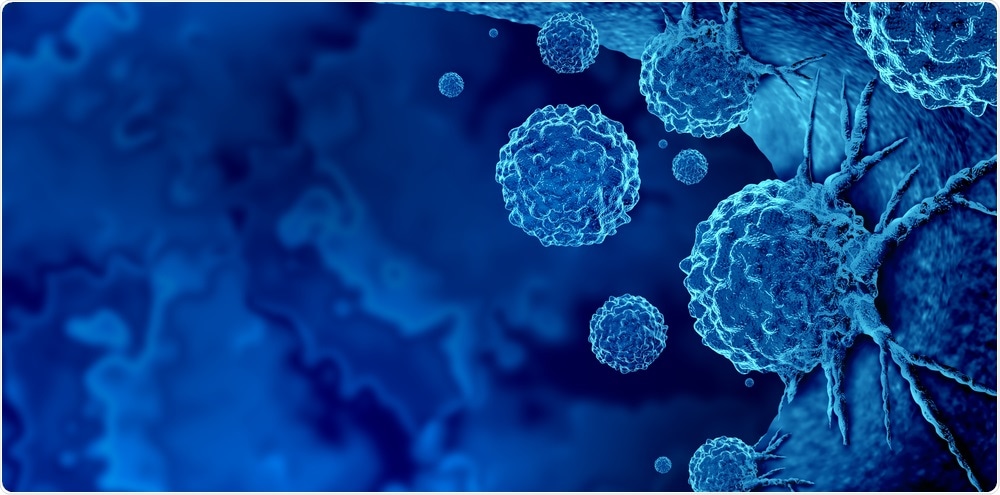The immune system in the human body can identify and fight against cancer cells. However, when cancer cells gain the ability to overcome this attack, malignant tumors form in patients.

Cancer Cells. Image Credit: Lightspring/Shutterstock.com
A new study headed by scientists at Massachusetts General Hospital (MGH) unravels certain crucial factors required for the survival of immune cells in the fight against cancer. The results of the study, reported in the journal Cell, suggest prospective therapeutic targets to counterbalance so that the immune system can defeat aggressive cancers effectively.
Cytotoxic T lymphocytes (CTL) are the cells that identify and kill cancer cells. These cells are first activated in tumor-draining lymph nodes. From here, they make it to the bloodstream to reach tumors and fight against malignant cells.
But for CTLs, tumors are extremely hostile environments. A study by researchers using imaging techniques to investigate what happens revealed that to survive in tumors, CTLs need to spend time in regions close to blood vessels in the tissues around cancer cells.
Within these niches, they are able to interact with a highly activated population of so-called dendritic cells that provide survival signals that CTLs depend on. Such signals, including the cytokine IL-15, enable CTLs to survive long enough to effectively eliminate cancer cells and, under ideal conditions, reject the tumors entirely.”
Thorsten Mempel, MD, PhD, Associate Director, Center for Immunology and Inflammatory Diseases, Massachusetts General Hospital
Mempel, who is also the senior author of the study and a professor of medicine at Harvard Medical School, and his team also wondered how CTLs reach these survival niches. They presumed a crucial role for chemokines—chemotactic guidance factors directing the migration of immune cells and enabling them to identify each other inside tissues.
We discovered that one chemokine called CXCL16 is highly expressed by those activated dendritic cells that occupy the blood vessel–associated niches, and that the receptor for this chemokine, called CXCR6, helps CTLs to accumulate in the niches and is thereby critical for their survival in tumors.”
Mauro Di Pilato, PhD, Study Lead Author and Assistant Professor, Department of Immunology, The University of Texas MD Anderson Cancer Center
Such an in-depth insight might enable researchers to develop more effective immunotherapies for cancer patients. In simultaneous studies, one of the research teams involved has already designed CTLs to express more CXCR6. This modification enhanced the ability of the cells to regulate tumor growth in animal models of cancer.
Source:
Journal reference:
Di Pilato, M., et al. (2021) CXCR6 positions cytotoxic T cells to receive critical survival signals in the tumor microenvironment. Cell. doi.org/10.1016/j.cell.2021.07.015.